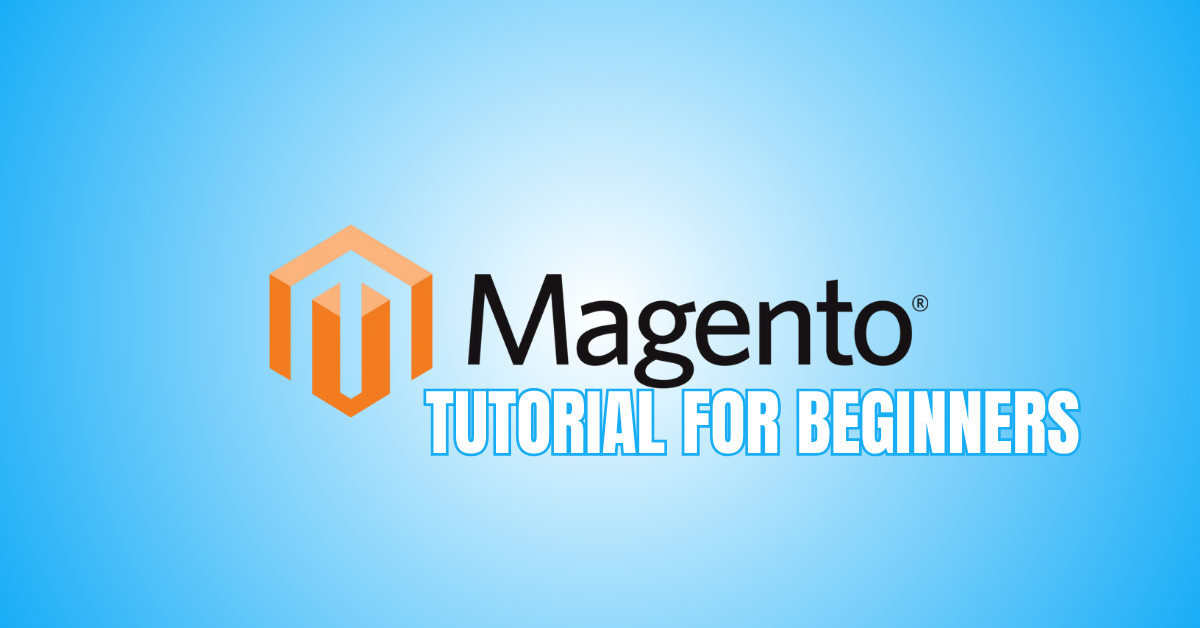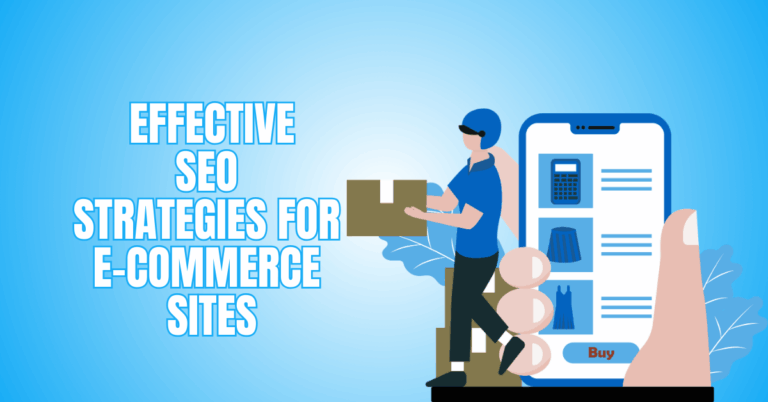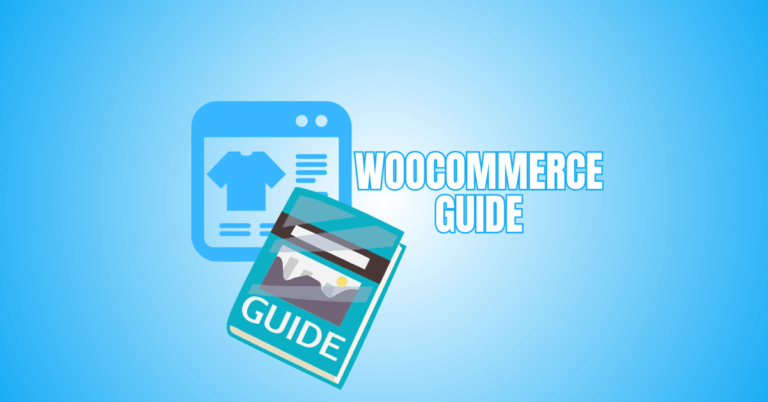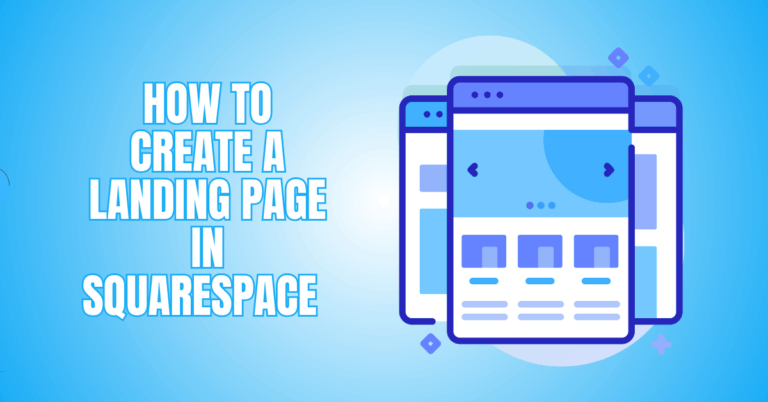Step-by-Step Magento Tutorial For Beginners
Without the proper resources, opening an online store can be both thrilling and daunting. Beginners may construct a professional online shop using Magento, a robust and versatile eCommerce platform. From easy product management to secure payments, it’s designed to grow with your business.
This guide will walk you step-by-step through setup, customization, and success strategies in our complete Magento tutorial for beginners.
What Is Magento?
An open-source eCommerce platform called Magento was created to give companies the freedom and ease to set up and run online stores. It was officially launched on March 31, 2008, by Roy Rubin and Yoav Kutner, under the company Varien Inc.
Built using PHP, Magento quickly became popular for its scalability, customization options, and robust feature set, making it suitable for both small startups and large enterprises.
Magento offers two main versions: Magento Open Source, which is free to use and highly customizable, and Adobe Commerce (formerly Magento Commerce), a premium, feature-rich solution for larger businesses.
It is perfect for worldwide operations because of its exceptional capabilities, which include the ability to manage numerous stores from a single dashboard.
Today, Magento powers hundreds of thousands of online stores worldwide, with significant user bases in countries like the United States, the United Kingdom, Germany, Australia, India, and Canada.
The platform supports multiple languages and currencies, helping merchants reach customers across diverse markets.
Its large developer community, vast marketplace of themes and extensions, and strong SEO capabilities make Magento a go-to choice for businesses aiming to grow and compete in the fast-paced eCommerce world.
Key Features Of Magento
Magento is a powerful, flexible eCommerce platform designed to help businesses build scalable, customizable online stores with advanced tools for product management, SEO, security, and seamless customer experiences.
1. Open-Source Platform
Magento’s open-source nature gives businesses and developers complete control over their eCommerce store. You can download Magento Open Source for free, then fully customize it to fit your brand’s unique needs.
The flexibility extends to design, functionality, and integrations, making it suitable for both small businesses and enterprise-level stores.
With an active community of developers, you have access to forums, documentation, and thousands of extensions to extend your store’s capabilities.
This open framework allows innovative features to be implemented without restrictions, helping businesses stay ahead of competitors while avoiding the limitations that often come with closed, proprietary eCommerce platforms.
2. Mobile-Friendly Design
A Magento tutorial for beginners can guide you through setting up a mobile-friendly store that enhances user experience and boosts sales across all devices.
This is important because online retail is still dominated by mobile shopping. With built-in mobile-friendly themes, you can deliver a smooth browsing and checkout experience for customers, regardless of their device.
The responsive framework automatically adapts layouts, images, and navigation to screen sizes, improving usability and reducing bounce rates. Mobile optimization also benefits your SEO rankings, as search engines favour mobile-ready sites.
Whether customers browse on iOS or Android, Magento’s mobile-first approach makes sure your store stays engaging and functional, boosting conversions and sales.
3. Advanced Product Management
Magento’s robust product management system allows you to efficiently handle extensive inventories with diverse product types, including simple, configurable, grouped, bundle, downloadable, and virtual products.
Bulk upload and update features make it easy to manage thousands of SKUs quickly. You can also set custom attributes, manage stock levels, schedule product availability, and display related or upsell products to increase sales.
Product pages can be optimized with detailed descriptions, images, and videos to enhance customer engagement. The system supports multi-language and multi-currency options, making it ideal for global sales. Magento’s flexibility ensures accurate inventory control and a better shopping experience.
4. Powerful SEO Tools
Magento comes equipped with strong SEO features that help your store rank higher in search engine results. You can easily edit meta titles, descriptions, and keywords for products and categories.
The platform generates SEO-friendly URLs, XML sitemaps, and canonical tags to improve crawlability and avoid duplicate content issues.
Magento also supports schema markup, which can enhance product listings with rich snippets. Mobile optimization and fast page loading further boost SEO performance.
Store owners have direct control over their search visibility thanks to these integrated tools, which also make it simpler to draw in organic visitors by doing away with the need for several third-party SEO plugins.
5. Multiple Storefronts
A Magento tutorial for beginners can help you learn how to set up and manage multiple storefronts efficiently from a single admin panel.
This feature is ideal for businesses selling different brands, targeting various markets, or operating in multiple regions. Each storefront can have its own design, language, currency, and product catalogue, yet all can be managed centrally.
This saves time and reduces administrative complexity. You can also set unique pricing, promotions, and tax rules per store.
Magento is ideal for businesses that need to serve a variety of audiences without having to manage entirely different eCommerce platforms because of its multi-site versatility, which allows for worldwide expansion while preserving a single backend system.

6. Flexible Payment & Shipping Options
Several payment options, including bank transfers, PayPal, credit cards, and cash on delivery, are integrated into Magento. It also integrates easily with leading payment gateways like Stripe, Authorize.Net, and Braintree.
For shipping, you can set flat rates, free shipping, or real-time carrier rates from UPS, FedEx, and DHL. Magento allows you to configure rules for different regions, enabling precise cost calculations.
Customers benefit from diverse checkout options, while businesses gain flexibility to meet local preferences. This variety enhances the shopping experience, reduces cart abandonment, and ensures that you can cater to both domestic and international buyers seamlessly.
7. Customizable Themes & Extensions
Magento’s vast library of themes and extensions allows you to design a store that’s visually appealing and fully functional. Extensions add new features, such as advanced search, social media integration, loyalty programs, and marketing tools.
Developers can also build bespoke modules for unique business needs. The Magento Marketplace ensures these add-ons are vetted for quality and compatibility.
With unlimited customization options, you can continually enhance your store’s look, functionality, and user experience, ensuring it evolves alongside your business goals and customer expectations.
8. Advanced Reporting & Analytics
To analyze performance and make data-driven business choices, a Magento tutorial for beginners may educate you on how to use sophisticated reporting and analytics.
Built-in reports track sales, orders, tax, shipping, best-selling products, and customer activity. This data helps you identify trends, measure marketing effectiveness, and optimize product offerings.
You can also integrate Magento with Google Analytics or other BI tools for deeper insights. Custom dashboards allow you to view key metrics at a glance, aiding in faster decision-making.
By understanding customer behaviour and sales patterns, you can fine-tune promotions, improve inventory planning, and boost revenue. Magento’s analytics features empower data-driven growth strategies for your eCommerce store.
9. Security Features
Magento places a high premium on security, which includes powerful password encryption, two-factor authentication, and SSL certifications.
Regular security patches protect against vulnerabilities, and administrators can configure user roles to limit backend access.
Magento also supports PCI compliance for safe credit card transactions. Data encryption ensures customer information remains secure during storage and transfer.
Unauthorized access and cyberattacks are less likely because of the platform's integrated fraud detection technologies and CAPTCHA capabilities.
This robust security framework gives customers confidence when shopping and protects businesses from costly breaches, making Magento a trusted choice for secure online retail operations worldwide.
10. Scalability
Magento is designed to grow with your business. Whether you’re running a small store or managing a massive product catalogue with high traffic, Magento can handle it.
Its architecture supports advanced caching, database optimization, and load balancing to maintain performance during peak demand.
You can easily add more products, integrate third-party systems, and expand into new markets without rebuilding your store. This scalability ensures long-term cost-effectiveness, as you won’t need to switch platforms as your business grows.
Magento’s enterprise-level capabilities make it suitable for ambitious growth plans, from startups to multinational corporations with complex eCommerce requirements.
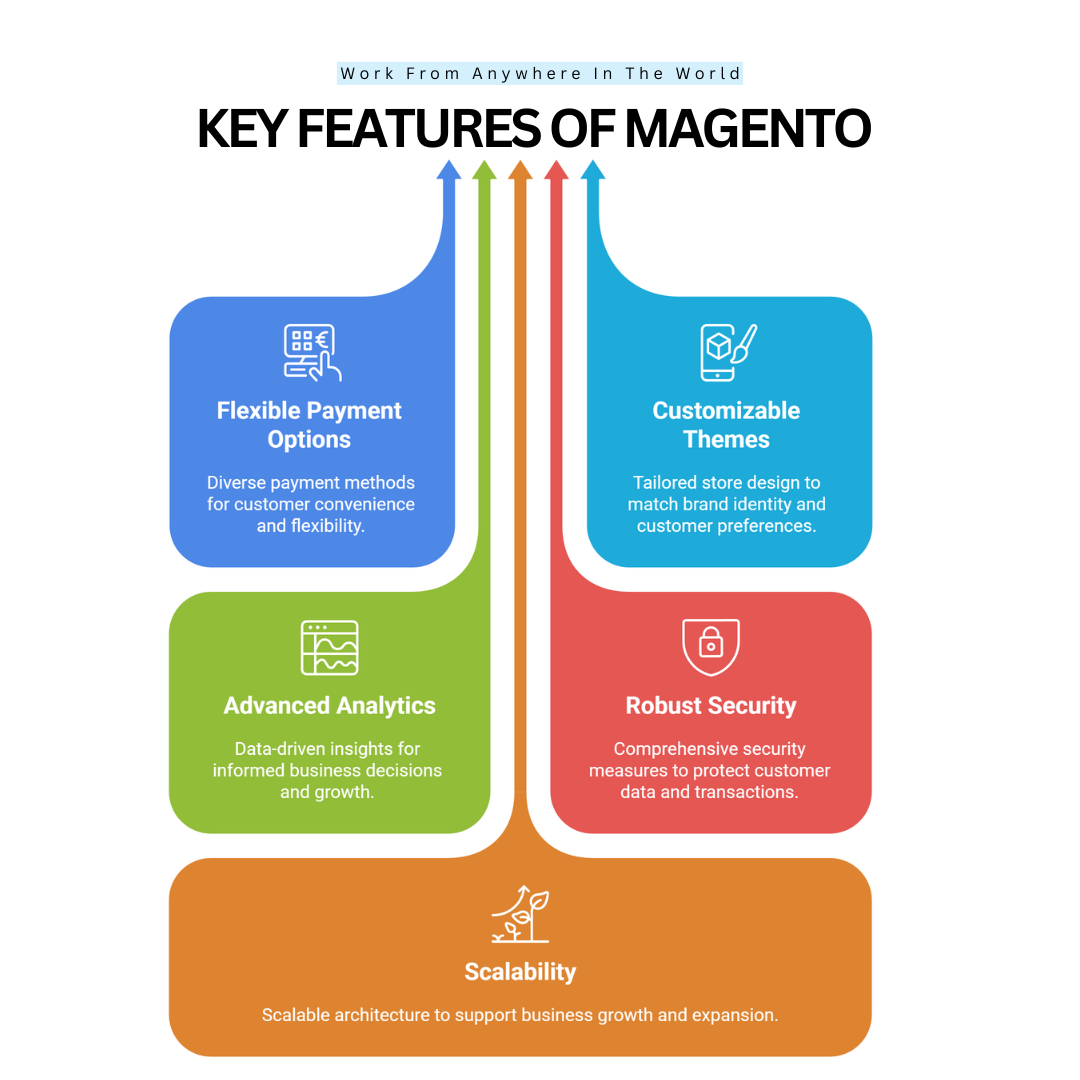
Step-by-Step Magento Tutorial For Beginners
Magento System Requirements
A Magento tutorial for beginners can explain the essential system requirements needed to run your store smoothly and securely.
These ensure optimal performance, security, and scalability for your online store, covering software, hardware, and essential tools.
1. Operating System
Magento performs best on 64-bit Linux operating systems such as Ubuntu, CentOS, Debian, or Red Hat. While you can develop on macOS or Windows, production environments should use Linux for better reliability, performance, and support from the Magento community and hosting providers.
2. Web Server
Magento supports Apache 2.4 or newer with mod_rewrite and mod_ssl enabled for URL rewriting and secure connections.
Another reason for the widespread adoption of Nginx 1.x is its excellent performance and capacity to manage huge traffic volumes with effective configuration.
3. Database
Supported databases for Magento include MySQL 8.0 and MariaDB 10.4 or later. These relational databases are crucial for storing product data, customer information, and orders. Using supported and updated database versions ensures stability, security, and efficient data retrieval.
Wealthy Affiliate – Mini Review (2025)
If you’ve ever thought about turning your blog, passion, or niche into an online business,
Wealthy Affiliate (WA) is one of the most beginner-friendly platforms I’ve used.
It combines step-by-step training, website hosting, SEO research tools,
and an active community all in one place.
What I like most: you can start free (no credit card needed),
explore lessons, test the tools, and connect with other entrepreneurs
before upgrading. WA isn’t a “get rich quick” scheme — it’s a platform where success comes
from consistent effort and applying what you learn.
4. PHP
Magento requires PHP 8.1 or 8.2 with several necessary extensions like bcmath, curl, gd, intl, mbstring, openssl, pdo_mysql, soap, and zip.
These extensions enable vital Magento functions such as encryption, image manipulation, database access, and external API integration.
5. Memory
A minimum of 2GB RAM is necessary for Magento development environments, but at least 4GB RAM or more is strongly recommended for production servers.
Sufficient memory helps handle multiple visitors, complex operations, and background processes without performance degradation.
6. Composer
Composer 2.x is a critical dependency manager used to install Magento components and extensions. It makes managing libraries and packages easier, guarantees version compatibility, and facilitates developer upgrades and customization.
7. SSL Certificate
For any live Magento store, a valid SSL certificate is required to enable HTTPS. This secures data transmission between users and the server, protects sensitive customer information, enhances trust, and improves search engine rankings.
8. Other Requirements
Magento requires Elasticsearch 7.9 or newer for catalogue search functionality, improving search speed and accuracy. Redis is recommended for session and cache storage to boost performance and scalability, especially for stores with high traffic and extensive catalogues.

How To Install Magento (Step-by-Step)
A Magento tutorial for beginners can walk you through the installation and product setup process to launch your store quickly and efficiently.
This guide covers installation and product setup, helping you launch, configure, and start selling efficiently with step-by-step instructions.
1. Download Magento
Visit the official Magento (Adobe Commerce) website and choose the Magento Open Source edition. Download the most recent version by logging in or creating an Adobe account.
Ensure you have system requirements like PHP, MySQL, and Composer ready. You can also install Magento via Composer for easier updates and dependency management. Store the downloaded files in your web server’s root directory.
This step ensures you have the correct, official Magento package without outdated or unsafe third-party versions, setting a solid foundation for a stable, secure, and high-performing eCommerce platform installation. Always verify the file integrity after downloading.
2. Set Up A Web Server Environment
Magento requires a proper LAMP or LEMP stack. Install Apache or Nginx, PHP (compatible version), and MySQL or MariaDB—Configure PHP extensions needed by Magento, such as mbstring, intl, and gd.
Allocate sufficient memory and increase max_execution_time to handle the installation process. Make a user with all Magento permissions and a database. If using XAMPP, WAMP, or MAMP for local testing, ensure your settings match Magento’s requirements.
A correctly configured server environment ensures smooth operation, prevents installation errors, and avoids performance issues later. Keep your server updated to minimize vulnerabilities before proceeding to the next installation stage.
3. Upload Magento Files
If installing on a live server, connect via FTP or SSH and upload Magento’s extracted files to your domain’s root directory (public_html or a subfolder). Ensure correct file permissions: directories set to 755 and files to 644.
For Composer-based installation, run the necessary commands directly in your server terminal. Correct file placement ensures Magento’s installer can run properly when accessed via a browser.
Avoid placing files in unintended directories, as this can cause URL and path issues. This step essentially prepares your store’s backbone so the installation script can initialize and set up the platform’s structure successfully.
4. Run The Magento Web Installer
A Magento tutorial for beginners can guide you step-by-step through running the web installer to set up your store successfully.
The installer will guide you through steps like agreeing to terms, readiness checks, and database configuration. Enter your database details, web URL, and admin panel credentials.
You can configure advanced settings, like session storage and encryption keys. If the readiness check fails, fix the indicated issues before proceeding.
Completing this wizard installs Magento’s core, connects it to your database, and prepares it for use. This stage officially transitions your environment from a collection of files into a functioning eCommerce platform.
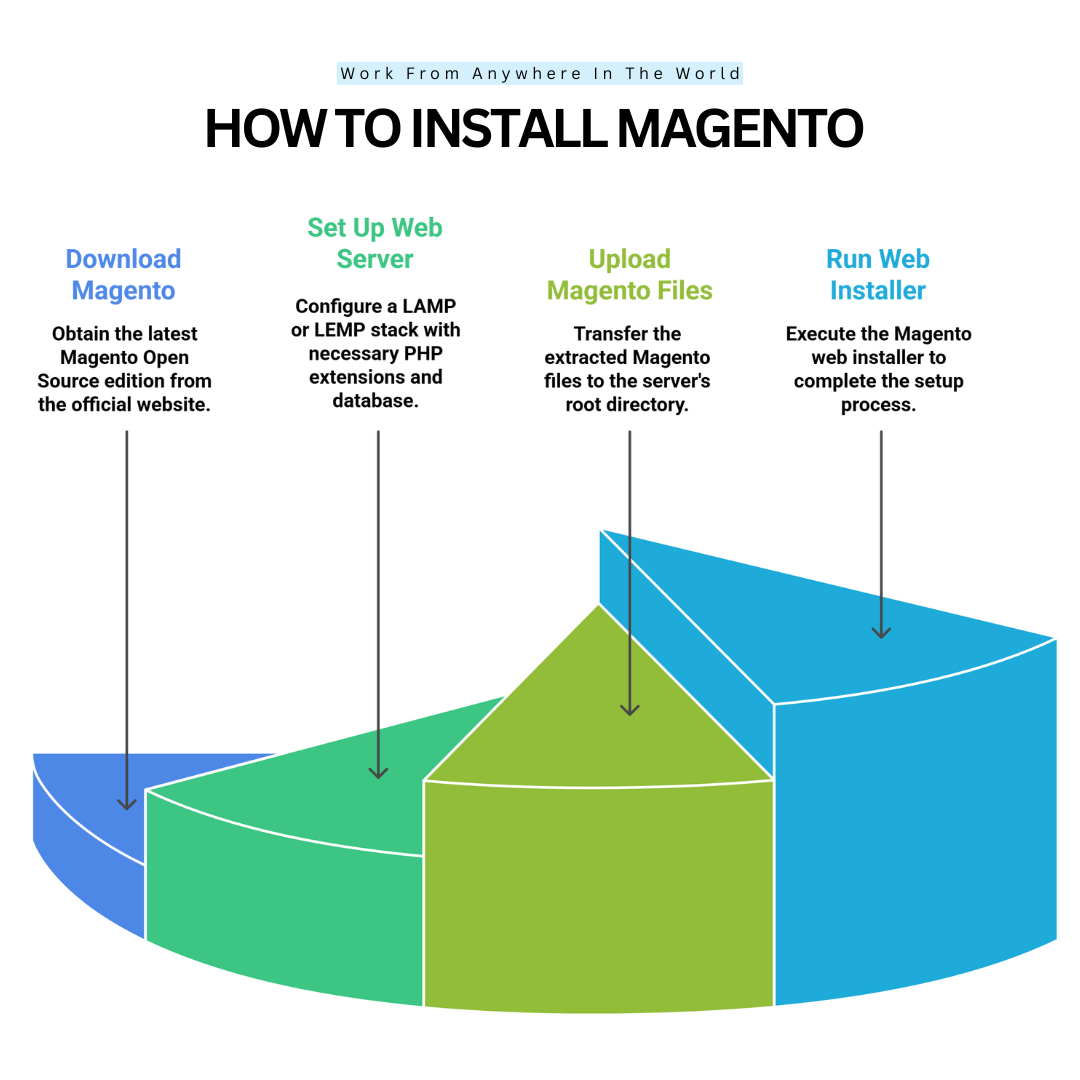
5. Configure The Magento Admin Panel
Log in to your Magento admin panel using the URL and credentials you set during installation. Familiarize yourself with the dashboard layout, including menus for catalogue management, sales, customers, and reports.
Set your store’s basic configurations under Stores > Configuration, including currency, locale, tax settings, and email addresses.
Adjust time zone and language to suit your market. Configuring your admin panel ensures your store’s operations are aligned with your business requirements.
This step also helps you become comfortable navigating Magento’s backend, which is essential for managing products, orders, and customers effectively over the long term.
6. Add A New Product
In the admin panel, navigate to Catalogue> Products and click “Add Product.” Choose a product type: Simple, Configurable, Grouped, Virtual, Bundle, or Downloadable.
Fill in essential details such as product name, SKU, price, and quantity. Set the product’s stock status and choose visibility options (e.g., visible in catalogue and search).
Upload a high-quality image, set the product’s weight (if applicable), and assign it to relevant categories. Adding accurate, complete product details improves customer experience and SEO.
A Magento tutorial for beginners can show you how to add and customize products in the admin panel to maximize sales potential.
7. Configure Product Information And SEO
While adding a product, scroll to the Search Engine Optimization section and fill in URL key, meta title, and meta description. In the Content section, write an engaging description that clearly explains features and benefits.
Use bullet points for readability. Assign attributes like colour, size, or material under Attributes. Set advanced pricing rules, tier pricing, or special offers as needed.
This step ensures your product is not only listed but also optimized for search engines and conversions. Well-configured products make it easier for customers to find your items online and help improve your store’s ranking.
8. Save And Publish Products
After completing all product fields, click “Save” or “Save & Close.” Ensure the product’s status is set to “Enabled” so it becomes visible to customers. Clear Magento’s cache under System > Cache Management to make updates appear instantly on the frontend.
Test the product page to confirm images, descriptions, pricing, and inventory display correctly. Publishing products correctly ensures your catalogue is accurate and functional, which helps maintain customer trust.
Before going live, you can also see how your product will appear on desktop and mobile devices to guarantee a consistent buying experience across all platforms.
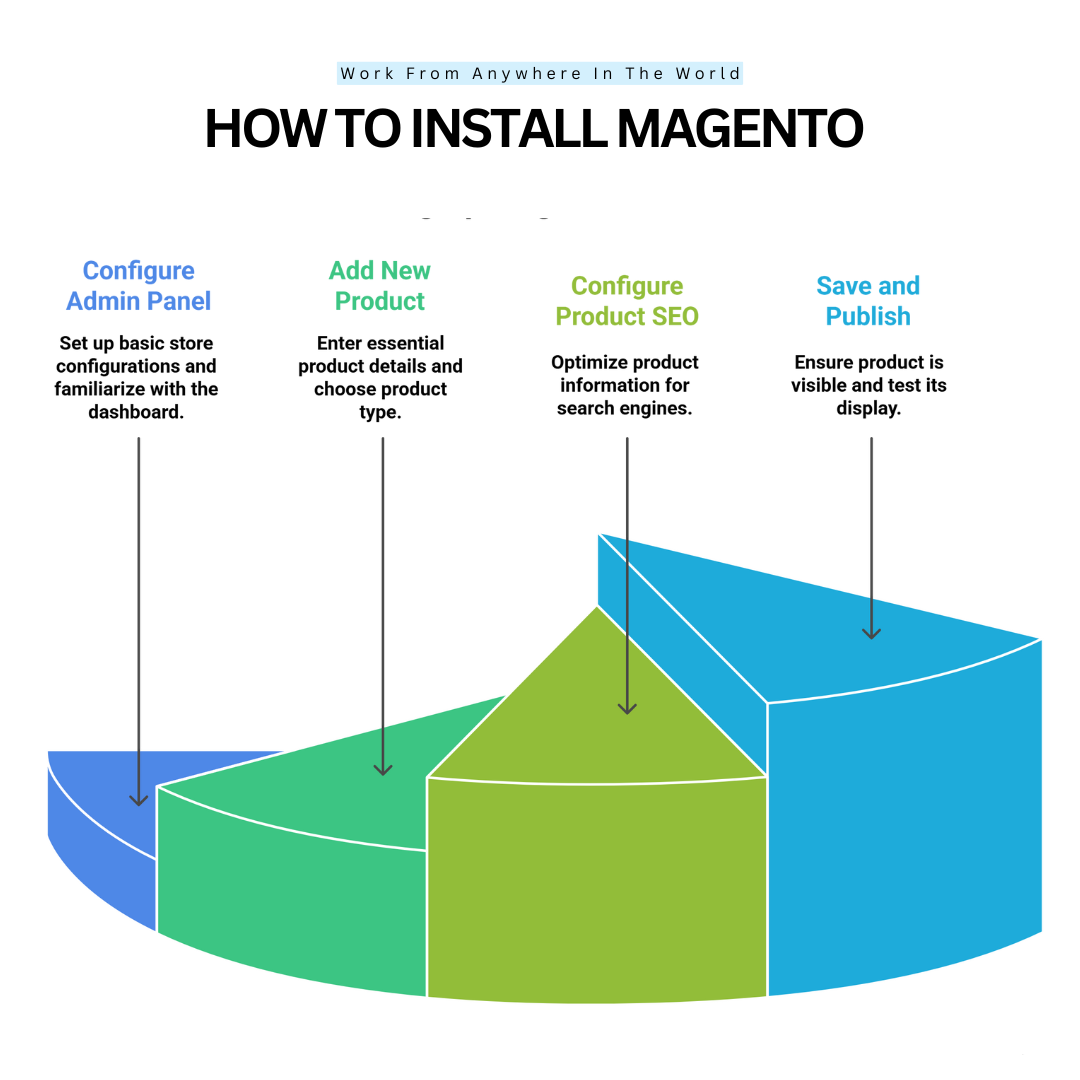
Conclusion
A Magento tutorial for beginners can simplify the learning process and help you build a flexible, scalable, and successful online store.
While it has a learning curve, following this tutorial makes setup, customization, and management much easier. Whether you’re starting small or aiming big, Magento offers the flexibility, scalability, and tools needed to create a thriving eCommerce business.
I trust you enjoyed this article on the Step-by-Step Magento Tutorial For Beginners. Please stay tuned for more insightful blogs on affiliate marketing, online business, and working from anywhere in the world.
Take care!
— JeannetteZ
💬 Your Opinion Is Important To Me
Do you have thoughts, ideas, or questions? I’d love to hear from you. Please leave your comments below or email me directly at Jeannette@WorkFromAnywhereInTheWorld.com.
📚 More Work From Anywhere Reads
🚀 Ready to Build a Business You Can Run from Home
or from Anywhere in the World?
Imagine creating income on your terms — from home, a cozy café, or wherever life takes you.
With the right tools, training, and community support, it’s entirely possible.
Start your own online business for free — no credit card needed.
Disclosure
This post may contain affiliate links. As an Amazon Associate and participant in other affiliate programs, I earn from qualifying purchases at no extra cost to you. Please read my full affiliate disclosure.

